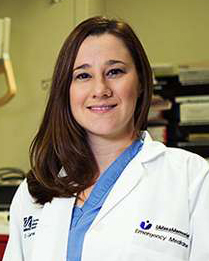
Toxicology and Research Resource Links
Toxicology Reference Data
Acute Exposure Guideline Levels (AEGL) (Change to Chemicals under the Toxic Substances Control Act (TSCA)
Acute* Exposure Guideline Levels, or AEGLs, are intended to describe the risk to humans resulting from once-in-a-lifetime, or rare, exposure to airborne chemicals. The National Advisory Committee for AEGLs is developing these guidelines to help both national and local authorities, as well as private companies, deal with emergencies involving spills, or other catastrophic exposures.
ATSDR Minimal Risk Levels for Hazardous Substances
List of MRLs , an “estimate of the daily human exposure to a hazardous substance that is likely to be without appreciable risk of adverse noncancer health effects over a specified duration of exposure.”
ATSDR summaries (Frequently Asked Questions)
Agency for Toxic Substances and Disease Registry overview of the health effects of chemicals often encountered as environmental pollutants, written in the format of question and answers. Nontechnical language.
Centers for Disease Control Documents
Searches a large database of documents covering toxicology, public health, and regulatory information from within the various branches of the CDC, including NIOSH, and the Center for Environmental Health.
The Department of Energy’s (DOE’s) Chemical Safety Program provides a forum for the exchange of best practices, lessons learned, and guidance in the area of chemical management.
Search and display of registry number, chemical name, molecular formula, structure, physical and toxicological properties plus locator and classification data
Site providing searchable indices of the entire Code of Federal Regulations, and recent years’ Federal Register. Find key regulations and proposed regulations from EPA, OSHA, FDA, CPSC, and other federal agencies.
Environmental Health & Toxicology Archive
Portal to multiple resources on diverse aspects of basic and clinical toxicology, including environmental, pharmaceutical, radiological, reproductive, and others. Maintained by the National Library of Medicine
EPA “IRIS” Database (Integrated Risk Information System)
EPA’s key risk assessment database, representing EPA scientists’ consensus on levels of contaminants in environmental media associated with noncarcinogenic and carcinogenic endpoints.
Link to tables of risk-based screening levels for environmental chemicals in soil, air, and water utilized by the Superfund program of US EPA Regions 9, 3 and 6. Also contains a link to a Screening Level Calculator to assist in calculating site-specific screening levels.
Chemical information summaries prepared by EPA.
Provides a variety of information about pesticides.
A relational database on occupational diseases and hazardous exposures. Also contains a link to an NLM site where keyword queries may be entered.
Consumer/Household Products Database
What’s under your kitchen sink, in your garage, in your bathroom, and on the shelves in your laundry room? Learn more about what’s in these products, about potential health effects, and about safety and handling.
ILO Encyclopedia of Occupational Health and Safety, 4th Edition
The International Labor Organization’s comprehensive encyclopedia of information on industrial processes and adverse health effects is available free on-line.
International Programme on Chemical Safety / INCHEM
Gateway to a large library of documents on specific chemicals from the International Programme on Chemical Safety (sponsored in part by the World Health Organization). Included are numerous Poison Information Monographs, Environmental Health Criteria, IARC monographs, Pesticide Data Sheets, and other databases with information on the physical properties and toxic effects of chemical agents.
International Toxicity Estimates for Risk Assessment (ITER)
Gateway to a tabular database of human risk values and cancer classifications for over 680 chemicals of environmental concern from multiple government organizations worldwide (EPA, ATSDR, Health Canada, National Institute of Public Health & Environmental Protection RIVM -the Netherlands, and others)
LactMed – Drugs and Lactation Database
The LactMed® database contains information on drugs and other chemicals to which breastfeeding mothers may be exposed.
MAK Commission maximum workplace concentrations and biological tolerance values
The MAK Commission proposes maximum workplace concentrations (MAK values) for volatile chemicals and dust, biological tolerance values (BAT values), biologische Leitwerte (BLW), biological reference values for workplace substances (BAR) and analytical methods for substances in the air and biological material.
A compilation of MSDS websites, some requiring subscription. Includes independent, governmental, nonprofit, and chemical manufacturers websites.
Free searching of the entire Medline database, provided via the National Library of Medicine’s web interface.
Searches databases of the National Toxicology Program at the National Institute of Environmental Health Sciences, the FDA National Center for Toxicology Research, and the National Institute for Occupational Safety and Health for research data and toxicology information on selected chemical agents.
National Institute for Occupational Safety and Health (NIOSH)
A research agency focused on the study of worker safety and health, and empowering employers and workers to create safe and healthy workplaces. NIOSH is part of the U.S. Centers for Disease Control and Prevention, in the U.S. Department of Health and Human Services.
Occupational Health and Safety Administration (OSHA) Standards
Full-text listing of OSHA Occupational Safety and Health Standards, including appendices on medical surveillance, and official interpretations rendered via correspondence and/or compliance directives.
OSHA Webpage for Annotated Tables on Permissible Exposure Limits
To provide employers, workers, and other interested parties with a list of alternate occupational exposure limits that may serve to better protect workers, OSHA has annotated the existing Z-Tables with other selected occupational exposure limits. OSHA has chosen to present a side-by-side table with the Cal/OSHA PELs, the NIOSH Recommended Exposure Limits (RELs) and the ACGIH® TLVs®s.
Provisional Peer Reviewed Toxicity Values for Superfund (PPRTV)
A database of toxicity values (e.g. LOAELs, reference concentrations) developed for the EPA Superfund program that have not yet undergone the multi-program review and consensus required for inclusion in IRIS.
Radiation Mass Exposure Incident Response
Page created by the National Institute of Environmental Health Sciences of links to documents and guidelines on emergency response to mass radiation exposure incidents, particularly radiation dispersal devices or “dirty bombs”.
Toxicology Data Network (Toxnet)
A cluster of databases on toxicology, hazardous chemicals and related areas.
Rules and Regulations that Impact Children’s Health (EPA)
Information on selected chemicals that include sections on special concerns for children, consideration for decision-making, common exposure media, toxicity, regulatory issues, and background on the chemical.
US Army Academy of Health Sciences Digital Collection of Stimson Library
A searchable digital archive of Army medicine publications dating from the 1920s to 1989 pertaining to a spectrum of military medicine, including medical reports and guidance regarding battlefield experience with chemical warfare agents and other toxicological hazards.
Pharmaceuticals, Drugs of Abuse, Poisonous Plants,Venomous Creatures, Environmental Toxins
Huge menu of global resources and information on environmental health.
Independent laboratory pill testing program. Launched in July 2001, its purpose is to collect, review, manage, and publish laboratory pill testing results from a variety of organizations.
Cornell University Poisonous Plants
Database of photos, botanical information, and health information on poisonous plants related to animals. Contains links to other related sites.
Serenata Flowers: Poisonous Plants Resources
A collection of poisonous plant information links from SerenataFlowers.com. Submitted generously by Mrs. James 5th grade class!
World Health Organization Venomous Snakes Database
List of venomous snakes and available antidotes
Toxicology Podcasts
and Blogs
ACMT members Gillian Beauchamp, MD, and Elizabeth (Elissa) Moore, DO deliver evidence-based medical toxicology core content and trending topics in easily digestible bites. Visit toxinten.com and follow on Twitter @toxinten.
The “Tox is Calling Me” video and podcast series is created by and for Medical Toxicology Fellows-in-Training (FIT) in collaboration with the Recent Graduate Section at the American College of Medical Toxicology (ACMT).
A podcast where toxicologists talk about all the meaty toxicology bones they have squirreled away over the years from toxicology controversies to issues buried in the literature.
The ACT podcast program, ToxChats©, reports on cutting-edge news in toxicological research from around the globe. The podcasts feature interviews with experts and a review of the current advances. Tune into the podcast using an internet connection to learn about breakthroughs and regulatory developments in toxicological research and more.
Toxicology Organizations
American Academy of Clinical Toxicology (AACT)
America’s Poison Centers (Formerly AAPCC)
European Association of Poison Centres & Clinical Toxicologists (EAPCCT)
American College of Toxicology (ACT)
Asia Pacific Association of Medical Toxicologists (APAMT)
Canadian Association for Poison Centres and Clinical Toxicology (CAPCC)
Society of Toxicology (SOT)
Research References
Directory of NIH Funded Members
| Name | Institution | NIH Award Received | Award Title | Abstract Link |
|---|---|---|---|---|
| Kavita Babu | University of Massachusetts | R21 | Research Grant | Read Abstract |
| Vik Bebarta | University of Colorado | U5 | Research Grant | Read Abstract |
| Neal Benowitz | University of California San Francisco | R01 U01 | Research Grant | Read Abstract Read Abstract |
| Steven B. Bird | University of Massachusetts | U1 | Research Grant | Read Abstract |
| Ed Boyer | Harvard Medical School | R01 U01 | Research Grant | Read Abstract Read Abstract |
| Stephanie Carreiro | University of Massachusetts | K3 | Research Grant | Read Abstract |
| Peter Chai | Harvard Medical School | K4 | Research Grant | Read Abstract |
| David Jang | University of Pennsylvania | K4 R01 | Research Grant | Read Abstract Read Abstract |
| Alex F. Manini | Icahn School of Medicine Mount Sinai | R01 R01 | Research Grant | Read Abstract Read Abstract |
| Andrew A. Monte | University of Colorado | R35 | Research Grant | Read Abstract |
| Paul Pentel | University of Minnesota | U01 | Research Grant | Read Abstract |
| Lawrence Quang | Arkansas Children’s Hospital | K4 | Research Grant | Read Abstract |
| Robert Wright | Icahn School of Medicine Mount Sinai | R01 P3 P3 | Research Grant P Series P Series | Read Abstract Read Abstract Read Abstract |
Research Mentor List

Stephanie Carreiro, MD
Assistant Professor
University of Massachusetts Medical School
stephanie.carreiro@umassmed.edu
Mentor Speciality: General Career Development, Research, Grant Writing
Stephanie Carreiro, MD, is an emergency medicine physician and medical toxicologist. She is a 2009 graduate of New York Medical College and completed her Emergency Medicine Residency in 2013 at Brown University. She completed a medical toxicology fellowship at the University of Massachusetts in 2015 and remained on faculty as an Assistant Professor of Emergency Medicine. Dr. Carreiro has a passion for novel translational research, which she first discovered during residency while evaluating novel antidotes for cardiotoxicity in animal models. She now focuses on clinical research in substance use disorder space, with a particular focus on the current opioid epidemic. Her current research interests include the utilization of novel technologies and serum biomarkers to evaluate drug toxicity, substance abuse, and addiction. Dr. Carreiro is also currently pursuing a PhD in Biomedical Sciences from the University of Massachusetts Medical School.

Peter Chai, MD
Assistant Professor
Brigham and Women’s Hospital
pchai@bwh.harvard.edu
Mentor Speciality: Academic Careers, Atypical Career Pathways, Industry, Medical Publishing, Research, Technology
Dr. Peter R Chai is interested in the development of technologies to detect changes in human health with a focus in medication adherence for HIV prevention, detection of substance use in communities, and sensors and devices to improve hospital workflow.
He is funded by independent research grants from Gilead Sciences as well as a NIDA K23 to investigate the use of real-time adherence monitoring using ingestible sensors to measure Pre-exposure Prophylaxis for HIV using once-daily Emitricitabine/Tenofovir. This grant also develops an innovative behavioral intervention that teaches adherence skills responding to nonadherence events detected through ingestible sensors.
Dr. Chai also collaborates with investigators at the Massachusetts Institute of Technology where he is an affiliate research scholar to develop next-generation long-term ingestible sensors and drug delivery packages surrounding HIV prevention and substance use disorder treatment. He additionally collaborates with the Petrie Flom Center for Health Law Policy, Biotechnology and Bioethics at Harvard Law School on legal and ethical implications of electronic adherence monitoring. His work on ingestible sensors has led to speaking invitations at major HIV prevention and technology conferences, and publications in the Journal of Medical Internet Research. While ingestible sensors can measure medication adherence and substance use on individual levels, alternative techniques are required to inform substance use interventions on a community level. Dr. Chai, therefore, develops robotic methods to sample sewer wastewater measuring concentrations of human exposure to opioids and naloxone, and is developing this technology to provide community-level opioid use data to policymakers and researchers.

Mark Mycyk, MD
Editor-in-Chief, Journal of Medical Toxicology
Cook County Health / Toxikon Consortium
mycyk.mark@gmail.com
Mentor Speciality: General Career Development, Medical Publishing, Research
Dr. Mycyk found his way to medicine after obtaining a degree in English and American Literature from Harvard University. He completed a residency in emergency medicine at Boston City Hospital/Boston Medical Center, a fellowship in medical toxicology at the Toxikon Consortium and Cook County Hospital in Chicago, and currently serves as the Research Director at the Toxikon Consortium. His current scholarly work focuses on NEW (non-traditional, emerging, and web-based) drugs of abuse and innovative ways of disseminating scholarship.

David Tanen, MD
Professor/Senior Physician
Harbor-UCLA Medical Center
dtanen@emedharbor.edu
Mentor Speciality: Atypical Career Pathways, Developing National Leadership Skills, Education, General Career Development, Global Toxicology, Research, Education
David Tanen was raised in North Massapequa, NY and went to Harvard University for college where he studied chemistry and physics. He did my first two years of medical school at NYU, and then spent a year at the NIH on a Howard Hughes Medical Institute Research Fellowship where he studied psychopharmacology, before completing medical school at UCLA. Having been on a military scholarship during medical school, he came on active duty and did his internship in Internal Medicine at Bethesda Naval Hospital, then a two year GMO (General Medical Officer) tour with the Marines at Camp Pendleton, his Emergency Medicine residency at Naval Medical Center San Diego, and a Medical Toxicology fellowship at Good Samaritan in Phoenix, AZ. He is board-certified in Emergency Medicine and Medical Toxicology.
As a military Emergency Physician and Medical Toxicologist, Dr. Tanen completed multiple deployments around the world including a six-month Western Pacific cruise to Mogadishu, Somalia, and Saudi Arabia in 1994, two tours in Iraq (2003, 2004-2005), and two tours on the Navy’s hospital ships completing humanitarian missions in Central and South America, and Southeast Asia (2011, 2012). He also served as Research Director, Associate Residency Director, and Residency Program Director during his time at Naval Medical Center San Diego (2000-2012). He also served as volunteer faculty with the Medical Toxicology fellowship at UCSD.
As a retired Navy Captain, Dr. Tanen joined the faculty at Harbor-UCLA in 2013 as a Professor and Associate Residency Director. His research interests over the years have included crotaline envenomations, cyanide toxicity, mushroom poisoning, iron poisoning, neurologic emergencies (SAH, migraines), environmental emergencies, pharmacologic treatment of pain, and evaluation of the febrile infant. He has also had the opportunity to lecture around the world on disaster relief, medical toxicology, and the development of emergency medicine.

Meghan Spyres, MD
Banner University Medical Center Phoenix
mspyres@gmail.com
Mentor Speciality: Developing Inpatient/Outpatient Services, Developing National Leadership Skills, Medical Publishing, Research
Meghan Spyres attended medical school at Columbia University College of Physicians and Surgeons in New York City and stayed in New York to attending Emergency Medicine residency at Bellevue/NYU where she was chief resident. She completed her medical toxicology fellowship training in 2016 at Banner—University Medical Center in Phoenix, Arizona and is currently Assistant Professor of Clinical Emergency Medicine at the University of Southern California. She is actively involved in research; areas of interest include rattlesnake envenomations, drugs of abuse, Free Open Access Medical Education, and the intersection of critical care and toxicology. She is co-founder of Women in Toxicology, a group that promotes women in academic medicine.
Other Research Resources
ToxIC Internships
Fellow-in-Training Intern Opportunity with the Toxicology Investigators Consortium (ToxIC)
EMBRS
(sponsored by ACEP)
The EMBRS workshop is specifically designed to help and improve research skills. This is a great course for young faculty, those interested in improving their skills as a researcher, and physicians who are involved in research as part of their duties. Participants are also eligible to receive an EMF/EMBRS grant based on their research grant application.
Advanced Research Methodology Evaluation and Design (ARMED)
(from SAEM)
Research course taught by emergency medicine experts.